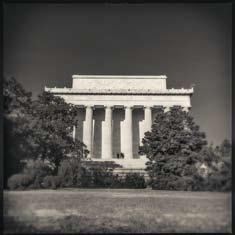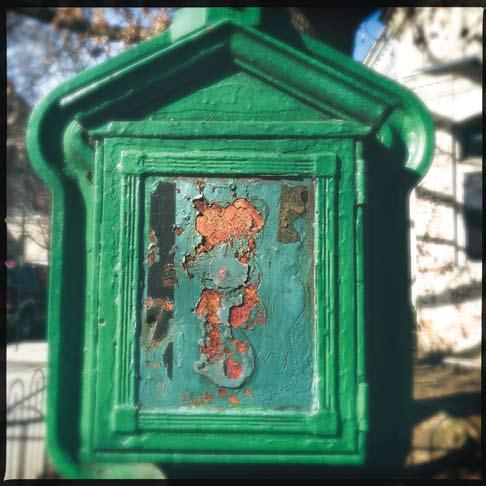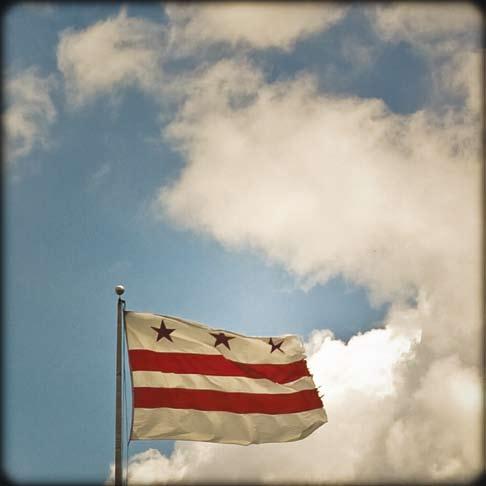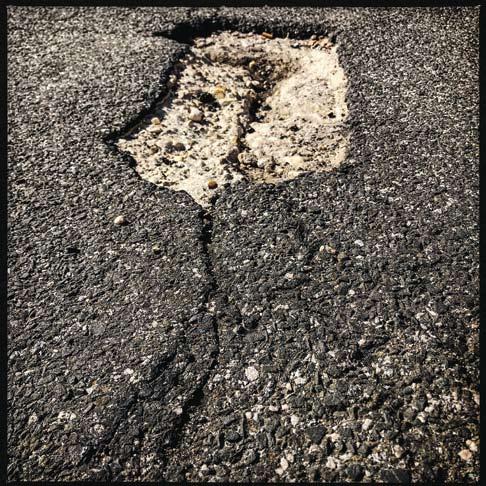
25 minute read
COVER STORY
during the pandemic, the club has held weekly gatherings on Google Meet that last more than an hour.
Bennett was one of the four players who competed at the Pan-Am Championship, along with Azeezah Muhammad and seniors Toni Anthony and Malcolm Wooten, the vice president of the club. Shortly before the tournament, organizers at the Pan-Am Championship contacted Nisa Muhammad about Howard participating in the virtual event. The club put together a team within a month’s time and called their former coach, Zahir Muhammad, for help.
Advertisement
Zahir is a celebrity in the D.C. chess world. A Ward 7 native, his father taught him how to play chess when he was 3 by defeating him “like 500 times in a row,” Zahir recalls. His competitiveness motivated him to keep playing. Zahir’s singular goal at the time was to beat his dad and finally, four years later, it happened. He was just getting started.
In 2018, the D.C. Council presented Zahir with a ceremonial resolution after he won the District of Columbia Scholastic Cup Chess Tournament the year prior. During his senior year at DeMatha Catholic High School, Nisa, a family friend, asked if he could help coach the newly re-activated Howard University Chess Club.
Having grown up in D.C., Zahir enjoyed visiting the Howard campus during festivals or homecoming and was familiar with the school. At 6-foot-4, he blended in with the college students. He happily agreed to be the chess club’s coach and soon became the expert voice that the players relied on.
Zahir, a Class A–rated player with a rating in the 1800s, hasn’t been as involved this past school year but was pulled in to act as a “barometer” for the team in preparation for the Pan-Am Championship. He watched the games online with pride. Throughout the tournament, Zahir thought back to the weekly practices, where members would often ask him to stay longer so they could practice more.
“It would be dark outside, cold and dark,” he says. “And we would be playing.”
As Zahir has gotten older, his motivations for playing chess have evolved. It began with wanting to beat his father. Then, Zahir wanted to win tournaments. And now, the freshman at Louisiana State University hopes that he can inspire other Black kids to pick up chess to compete in an environment that doesn’t have many Black faces. Howard University was the only HBCU that participated at the Pan-Am Championship.
The fact that the school exceeded expectations at the tournament gives him joy. Zahir believes it will inspire other Black students to pick up chess.
“It makes me feel, I would say validated, but not for me personally, but for them, because they’re all extremely talented. And they’re extremely smart,” he says. “And it makes me feel validated for them, because they can show on their level that, yeah, I’m Black, and I’m talented, and I’m smart.” Daaim Shabazz has been writing about Black chess players for 20 years for his online magazine, The Chess Drum. An associate professor of business at Florida A&M University, Shabazz is considered by some to be an amateur historian of Black chess.
Being in D.C. gives the Howard University Chess Club certain advantages that other HBCUs may not have, Shabazz says. The chess tables at Dupont Circle have drawn some of the game’s most legendary players, and beyond that, the D.C. area has a chess culture that few cities rival.
“You have a chess history in the D.C.Maryland area that is very well-established in terms of producing master-level players,” Shabazz says. “Particularly in the Maryland area, but D.C. as well. D.C. has a lot of pockets of activity. So Howard has an advantage in that they have the infrastructure. If they want to play in local tournaments, they can do that. It wouldn’t be a problem.”
Members of the Howard University Chess Club hope that will be the case.
Their success at the Pan-Am Championship has led to a spike in interest from students. Fascination in chess has increased during the pandemic, and the recent popular Netflix series The Queen’s Gambit contributed an even bigger boost. YouTube and Twitch have also given the centuries-old game a modern twist when it comes to spectating matches.
“One thing that chess players have been trying to do is trying to make chess look cool,” LeBlond says. “And so like, The Queen’s Gambit did a phenomenal job on that. It broke down that barrier that chess is boring, that chess is like for people that are strange or socially awkward. That’s not true. There’s cool people that play chess. And so that movie opened the door [to] what is chess.”
Nisa looks to the University of Maryland, Baltimore County as a model she hopes the Howard chess club can emulate. One of the team’s long-term goals is to give out scholarships for chess, like UMBC does.
“We want Howard University’s chess club to be seen as an intellectual sport,” Nisa says. “We want the chess club to grow to where we have it endowed and funded so that we can offer chess scholarships to students who have the chess skills.”
LeBlond has the same vision, and although he is no longer a student at Howard, he intends to stay involved with the school’s chess team. Bringing back the club was only the first step. He wants to see it grow.
WE’LL ALWAYS STRIVE TO BE YOUR ADVOCATE. DAY IN, DAY OUT.
Every day can bring changes, challenges and opportunities. Some are big, others small, but all of them can also alter your personal or business financial goals and priorities. What can make it all easier is a true financial partner. Someone who really listens, understands and then creates solutions with you, from managing your personal finances to running your business. That’s real banking for real life. And real business.
P E R S O N A L | B U S I N E S S | W E A L T H | I N S U R A N C E | M O R T G A G E
Member FDIC. Equal Housing Lender. Sandy Spring Bank NMLS # 406382. Wealth and Insurance products are not FDIC insured, not guaranteed, and may lose value. Sandy Spring Bank and the SSB logo are registered trademarks of Sandy Spring Bank. Real banking for real life.SM © 2021 Sandy Spring Bank. All rights reserved.

By City Paper staff Photos by Darrow Montgomery
The more time you spend in a place, the more things you’re likely to notice about it. So it makes sense that after nearly a year of quarantining and social distancing, our readers asked pointed questions both practical (how to travel across town) and theoretical (what’s behind PoPville’s continued popularity) about life in D.C. To answer them, we dug through documents, consulted previous reporting, and called our reliable sources—special thanks to the staff at the Office of Planning and WMATA, who field many requests every time this issue rolls around. As we wait for vaccinations and plan to spend several more months close to home, we hope some of these answers prompt you to safely explore a new place, or at least appreciate this town in a new way. —Caroline Jones
Well, what weird smell? Since the museum is closed and I couldn’t check if the question passed the smell test myself, I wrote to the reader who asked about it, hoping for more information. He replied, “I will try to clarify. First, it’s the Air and Space Building on the National Mall—not the one in Virginia,” referring to the Udvar-Hazy Center in Chantilly. “It’s a very distinctive smell; one I’ve never encountered before. It’s been there ever since the museum opened and it’s always the first thing I notice when I enter the building. (It’s not subtle!) The smell is so unusual I can’t really describe it but I thought it might be an odor originating from the flooring, perhaps some form of glue, since it seems to be very noticeable through the museum,” he wrote. “I guess my response only adds to the mystery!”
City Paper then reached out to the Air and Space Museum, which took a few days to try and identify the smell. We know this stinks, but they weren’t sure what our reader meant. “The National Air and Space Museum’s building on the National Mall opened in 1976, making it over 40 years old. With age and over 350 million visitors comes a variety of smells in the building. Unfortunately, we can’t pinpoint a specific smell to any one reason, artifact, etc. but the age of the building is the likely culprit!” writes Alison Mitchell, the deputy director of communications. There is good news for the nosy, though. “Fortunately, the building is undergoing a massive renovation which will improve the HVAC system, natural lighting controls, and all public spaces,” Mitchell writes, “which is sure to bring new and improved smells.” —Emma Sarappo

Is Xiao Qi Ji’s fur soft or scratchy? Cannot tell by obsessively watching videos of his antics.
Dear reader, have you ever encountered a sheep at a petting zoo? Marty Dearie, an animal keeper at the National Zoo, says panda fur is akin to sheep’s wool. “It’s not quite as knotty, but it has the same feel,” he says. “When they’re younger, it tends to be a little bit softer than the adults, but it’s still kind of wiry.”
Pandas have two coats. Dearie says the outer coat acts like a rain jacket that repels water and mud. A dense undercoat that’s much softer is designed to keep pandas warm. Panda cubs, like Xiao Qi Ji, “tend to have more of that really soft, fluffy underlayer,” according to Dearie. “My guess is when they’re younger, they need more insulation to keep warm.”
Panda lovers are probably already jealous of Xiao Qi Ji, Mei Xiang, and Tian Tian’s caregivers, but prepare to be even more envious of the team working at the David M. Rubenstein Family Giant Panda Habitat. “He loves being scratched,” Dearie says, referring to the young panda. If you dig your fingers into his fur, past the scruffy outer layer, you can feel his soft, fluffy undercoat. “He’s like a dog. I’ve even been able to make him kick his back leg.” —Laura Hayes Why is PoPville, with its racist commenters and lazy news reporting, so popular?
Although PoPville is technically reporting news in most cases, it is not formal journalism. Nor does Dan Silverman, its founder and curator, consider himself a journalist. He’s more of a “facilitator,” as he described his role in a 2018 interview. He’s “this guy who’s just there to make a space for people to talk about things that are of interest to me, and to talk about things that are of interest to them, and weed out the nonsense,” Silverman told Federal News Network’s What’s Working in Washington podcast. He did not reply to City Paper’s email posing this question.
While many other local blogs have fallen away, PoPville remains. It’s the place to go with your neighborhood spats, for restaurant openings and closings, to see city hawks and “some random ass dude driving” into Malcolm X Park, and for general “scuttlebutt,” as Silverman calls it.
His curation of press announcements, random spaces for rent, and various crime reports continue to draw clicks and eyeballs. Here are a few possible reasons: 1. Silverman has essentially created a community message board.
“A lot of the posts are either user-generated or user-inspired,” local media observer Jason Shevrin says. “He helps connect dots and direct conversation, but I think he’s a reflection of his readers’ interests.”
Silverman’s readers use PoPville as a resource, whether they’re looking for a lost pet, favorite sledding spots, or information about an interesting building, and a place for catharsis.
“They can basically ask a neighbor with the collective wisdom of large parts of the city,” Shevrin adds. 2. Crime news is clickbait. “If it bleeds, it leads,” so the old newsroom adage goes. But a lot of crime news reports—those that rely entirely or almost entirely on law enforcement’s perspective—are harmful, racist, and fear-based. They perpetuate racial stereotypes and, according to one study, can deepen unconscious racial bias. 3. He covers things that are too small (read: not really news) for media outlets to bother with. To wit: a hawk landing on Mayor Marion Barry’s head, “sweet city rides,” and the run on mini beef tacos at the 14th Street NW Trader Joe’s. Where else will you find that kind of content? —Mitch Ryals
Smithsonian’s National Zoo

Darrow Montgomery/File


Why is the Lincoln Memorial crooked? It’s not aligned on the east-west axis. Seriously, look at it on Google Maps.
As the reader notes, it does appear on Google Maps that the Reflecting Pool tilts slightly north toward the Washington Monument compared to the Lincoln Memorial, making the whole complex look a little crooked. It turns out this was not by accident, but by design.
“When construction on the Washington Monument began, its intended site at the intersection of the axes extending N-S from the White House and E-W from the Capitol was found to be too marshy, with inadequate foundations (it was very near the estuary of Tiber Creek),” David Maloney, the state historic preservation officer at the D.C. Office of Planning, tells City Paper in an email. “Thus they moved the site to the southeast on higher, firmer ground, where it was constructed in two phases from 1848 to 1888.
At the turn of the century, when the
McMillan Plan of 1901-02 reenvisioned the layout of the Mall, they deemed it important for the E-W axis of the new composition to intersect the monument, so the axis was adjusted so that it runs slightly south of true E-W. The N-S axis was not adjusted, so that the White House faces directly to the Jefferson Memorial without the monument intervening. As the many buildings along the Mall were built in the early 20th century, they were all laid out to conform to the southward shift of the axis, so it is not particularly apparent today.”
The Lincoln Memorial was one of those many buildings, but like the Capitol and the Washington Monument, it is oriented true N-S and E-W. “It’s the landscape features (steps, reflecting pool, etc.) of Lincoln that follow the tilted axis,” Maloney explains. —Kelyn Soong
What are those old cast-iron boxes you find on street corners?
Those are fire and police call boxes. District residents have likely come across these castiron boxes at one point or another because they are all over the city. These fixtures used to be a vital mode of communication in an emergency before the telephone or two-way radio were invented. Some of these boxes date back as early as the 1860s; the original ones are harpshaped. The first ones installed were fire boxes that relied on the telegraph system. People could pull a key inside the box if they saw a fire, which would subsequently alert the central alarm system. The police boxes are ovalshaped and contained phones. Officers would check in with headquarters by way of the box, notifying the desk whether all was well or they needed backup.
These call boxes became obsolete in the 1970s with the introduction of 911 for emergency services. A few cities like New York still have operational call boxes in the event that power or cellphone service become unreliable. However, none of the District’s hundreds of call boxes are functioning today. The electronic bits of these boxes were removed by 1995. Instead, some of these boxes have been turned into art. Cultural Tourism D.C., with funding from the D.C. Commission on the Arts and Humanities, led an initiative between 2000 and 2009 to restore the police and fire call boxes into pieces of art that reflect the neighborhoods in which they are located. —Amanda Michelle Gomez
Why are east-west transit routes in this city so bad? I shouldn’t have to go through downtown just to get from Petworth to Cleveland Park!
You’re right, reader. Traveling east to west in D.C. can be pretty tricky, depending on your start and end points. One barrier if you’re trying to move from Northeast to Northwest or vice versa: the more than 1,700 acres of Rock Creek Park. Metro’s Red Line roughly follows the outline of the park, but running a rail system through its center would destroy the park’s natural beauty. Your best option for moving across the park is on the bus. The E4 runs between Fort Totten Station and Friendship Heights Station via Military Road NW, and the H2, H3, and H4, known formally as the “Crosstown Line,” run slightly varying routes between Brookland— CUA Station and Tenleytown Station, making intermediate stops at Columbia Road NW and Georgia Avenue NW, Columbia Road and 14th Street NW, and Porter and Quebec streets NW near the Cleveland Park Metro. If you’re looking to get from Petworth to Cleveland Park without going all the way downtown, the H line is probably your best bet.
Once you move south of Rock Creek Park, your options improve significantly. While not completely straight, Metro’s Orange Line takes a relatively direct path from Vienna to New Carrollton, and the Silver Line, as well as the D.C. portion of the Blue Line, also run eastwest. And if you need to cut through the center of D.C., there’s always the H Street line running from Minnesota Avenue Station to Lafayette Square. You really haven’t experienced the District until you’ve ridden the X2.
Darrow Montgomery/File —Caroline Jones


Do the Metro canopies ever get cleaned? If so, how? If not, how do they stay clear of bird poo?
Ah, Metro’s iconic curved canopies, keeping you dry on the escalators (until the wind blows the rain into the mouth of the station entrance, that is). Why aren’t they covered in noticeable bird crap, considering their translucent appearance? The solution is elegant, according to WMATA Media Relations Manager Ian Jannetta. The materials and the design of the canopies do most of the work. “Wind, precipitation, and the smooth, sloped design of Metro’s canopies prevent dirt and other eyesores from accumulating,” Jannetta writes over email. “They do not require regular cleaning, but we do occasionally give them a pressure wash in the rare event that something unsightly appears.” We’d also wager that their height does some work in keeping the grime unnoticeable. —Emma Sarappo
Who are the leaders of the statehood fight? Where does the push for statehood stand? How can D.C. residents support the efforts to get statehood? What would it mean for life in D.C. if we were finally a state?
There are a lot of D.C. statehood leaders, but the one to start with is Del. Eleanor Holmes Norton. As she works to get statehood legislation passed in Congress, Norton has also worked to pass bills and change House rules to strengthen Home Rule. Then there are groups who are responsible for educating the public about statehood like DC Vote, and ones who try to change the minds of federal lawmakers, like 51 for 51. You may recognize Anise Jenkins, a longtime activist with Stand Up! for Democracy, and a younger generation of activists is joining existing organizations or taking up the fight by starting organizations of their own.
D.C.’s shadow delegation—one shadow representative and two shadow senators—spend their time advocating for statehood seeing as they can’t participate in any formal congressional activities. Local lawmakers also use their platform to advocate for statehood. Former mayor and current Ward 7 Councilmember Vince Gray was arrested in 2011, along with several other councilmembers, for participating in a protest against the federal government’s interference in local affairs.
Statehood legislation has been introduced in the House of Representatives and Senate. With Democrats holding the smallest possible majority in the Senate, passing statehood legislation this Congress is possible. During the Capitol insurrection, D.C. police had to save federal lawmakers after their Capitol Police became overwhelmed, further emboldening statehood

Darrow Montgomery/File

advocates. Of course, the most vocal critics of statehood, like Arkansas Sen. Tom Cotton, were not moved even after Jan. 6.
The biggest obstacle D.C. faces for self-autonomy is a likely Republican filibuster. Eliminating the filibuster would allow senators to pass statehood legislation with a simple majority, not the 60 votes required to end a filibuster. Some Democrats—namely, Sen. Joe Manchin of West Virginia—aren’t ready to do that.
What is a simple thing YOU can do to make your city a state? “Everybody has a network, no matter who you are and we need to activate all of those networks,” says Bo Shuff, executive director of DC Vote. He suggests calling friends and family who live outside D.C. to let them know about the statehood movement. They can then call their senators. Residents could also request a statehood sign so all the Biden officials who’ve moved into town can see the support statehood has in town.
Having statehood means a lot more than just having voting representation in Congress. It will change the way the District legislates and budgets, and completely transform its criminal justice system. Find a list of reasons to support statehood on page 16. —Amanda Michelle Gomez
What’s the most prominent global cuisine that isn’t featured in a D.C. restaurant?
Residents and visitors to D.C. can taste a variety of cuisines thanks to the city’s vibrant immigrant communities, which make the District a special place to live. The array only becomes more intriguing when you venture into the suburbs or into neighbors’ homes. We’ve still got a ways to go to compete with more densely populated cities that sprawl wide enough to have more affordable rents like New York, Chicago, and Los Angeles.
The question posed is tricky because there’s so much regional differentiation and nuance across communities and nations. You can travel from one Indian town to the next and encounter different dishes and ingredients. Then there’s the nature of the word prominent. What’s “well known” to some D.C. residents may not be to others.
With these caveats in mind, it’s hard to choose just one cuisine we should have more of within the District’s boundaries. Following the closure of Banana Leaf in 2017, the District’s dining scene would benefit from a restaurant dedicated to food from Sri Lanka like hoppers, fish curries, and shredded roti dishes called kottu.
Similarly, the departures of Domku and Bistro Bohem have left a pierogi-shaped hole in our hearts. While some Nordic, Russian, and Georgian restaurants serve a dish here and there from these hearty, cold-weather lands, there doesn’t seem to be dedicated Polish, Ukranian, Lithuania, Estonian, or Latvian restaurants within D.C. proper.
And while there are a few food trucks serving Indonesian cuisine, the District is missing a brick-and-mortar spot for sate padang, rice dishes like nasi goreng and nasi campur, beef rendang, gado-gado, sour soups, and sambals. Indonesia is the world’s fourth largest country by population. Dishes vary greatly from island to island and region to region.
Queried on Twitter, Washingtonians are hungry for more restaurants specializing in Syrian, Persian, Yemeni, Singaporean, Malaysian, Taiwanese, Scandinavian, Senegalese, Gambian, Cajun, and indigenous food of the Americas. If you’re a chef with a passion for one of these cuisines, shoot your shot. —Laura Hayes Why do short-term NO PARKING signs (for moving trucks, etc.) use such small font that is difficult or impossible to read without close inspection?

Anyone who has driven and attempted to find parking in D.C. knows there are mirages. The scenario: You drive up a street full of cars and then, all of a sudden, an open space inexplicably appears ahead, only for you to be greeted with a short-term no parking sign as you pull closer. But wait. The sign only restricts parking for a temporary time. Now if only you could see the specifics...
Several years ago, the District Department of Transportation released new emergency signs that eliminated handwritten letters and numbers to make the signs more clear, but to find out exactly why the font appears the way it does, City Paper reached out to DDOT with the following questions: • Is there a reason for the use of a particular font and size? • Are all of the short-term no parking signs uniform in font? • Are there any plans to make the font bigger? • What is the font and font size used for the signs?
“In 2017, DDOT implemented a uniform and systematic design for short-term No Parking signs after extensive engagement with key stakeholders, to include residents, ANC commissioners, and other District agencies,” a DDOT spokesperson tells City Paper in an email. “Font sizes, along with other information such as sign location, were factors in that thorough design process.”
As far as the font type and size, DDOT uses Times New Roman and the “information most relevant to motorists appear in fonts [ranging] from 48 point to 68 point. This includes type of sign, dates of the restrictions, days of the week, [and] hours of the day,” the spokesperson says. “The smaller font sizes are used for supplementary details such as permit type, permittee, [and] contact information.” —Kelyn Soong
When will the U.S. Department of Homeland Security finally consolidate and move to the St. Elizabeths campus? What will become of the current campus at Mass Avenue and Nebraska Avenue NW?
The short answer: Expect the process to take at least a few more years. Right now, construction is expected to be completed by 2026. Although the General Services Administration took control of St. Elizabeths’ west campus in 2004 and DHS has planned to consolidate its operations at St. Elizabeths since 2009, the project has moved slowly, even for the federal government, due in part to budget issues. In October 2020, the GSA issued a record of decision for an amended master plan that will include two new office structures, more than 1,000 new parking spots for employees, and additional landscaping. Several agencies within DHS won’t make the move, however. The TSA recently moved from Arlington to a new headquarters in Springfield, and FEMA announced in July that it will continue to work out of leased space on C Street SW.
Since DHS employees are still working at the Nebraska Avenue Complex, plans for what will happen to it in the future remain unclear. Don’t expect anything too wild to happen, however. For its role in the education of young women when the property housed the Mount Vernon Seminary for Young Women, and in breaking German codes during World War II when the Naval Communications Annex was based there, the NAC is listed on both the National Register of Historic Places and the D.C. Inventory of Historic Sites. As of 2015, an announcement on the DHS website says “the NAC will continue to be a DHS occupied facility and will begin a new chapter.” —Caroline Jones Why does 16th Street NW have so many houses of worship?
Starting with St. John’s Episcopal Church right next to the White House, churches, temples, and houses of worship line 16th Street NW. The reasons houses of worship have sought out 16th Street NW addresses have changed over time, but they will be familiar to any Washingtonian. Proximity to the White House promised cachet and prestige. As churches initially based downtown outgrew their homes, they turned to the trendy north-south thoroughfare. And as congregations moved to the suburbs, houses of worship relocated as well. Later, 16th Street NW offered some more affordable real estate. According to DCist, which dug into this topic in 2017, the fact that so many houses of worship were on 16th Street was the draw for Chua Giac Hoang Vietnamese Buddhist Temple. Their article on how the diverse, multifaith street came to be is well worth a read. —Will Warren
D.C.’s 311 system gets thousands of inquiries annually. Does the District government send an inspector to assess each and every 311 complaint, including potholes, leaf pickup, illegal dumping, etc.? Inspecting pothole complaints and illegal dumping reports seems unproductive. Why not just send the repair crew or the pickup team?
Before we get started, a minor correction: 311 receives millions of calls annually. According to Office of Unified Communications’ spokesperson Wanda Gattison, 311 handled 2 million requests last year.
Now, onto the question. Put simply, it depends. For requests such as illegal dumping, the Department of Public Works will send an inspector to investigate, according to a spokesperson for the Office of the Deputy Mayor for Operations and Infrastructure. The inspector may try to find the owner, and DPW’s team then comes to collect. No inspector is involved for leaf pickup requests, the spokesperson says.
There are several ways to contact 311. You can simply call 311 (or call (202) 737-4404 if you’re outside D.C.), text “NEW” or “MENU” to 32311, visit the online portal at 311.dc.gov, download the 311 app, or tweet at @311dcgov.
The latter option is a favorite of Advisory Neighborhood Commissioner Erin Palmer (4B02), who frequently tweets photos of overflowing public trash cans, damaged street signs, and potholes. Palmer says she’s found the most success with Twitter because requesters aren’t asked to classify a request and tag a location as they are on the mobile app or online portal. If you use those and don’t know which classification your issue falls under or the exact location, Palmer says the request is closed without any action.
“Twitter is easier for me, because I can say, ‘I’m on this corner,’ and take a picture,” she says. “Then there’s also the part that’s publicfacing. It can create public pressure to address the problem.”
Even with Twitter, Palmer says she’s had mixed results. DPW will empty overflowing trash cans fairly quickly, she says. But she’s been complaining about large trucks parked in residential areas, blocking bike lanes, for years. “They won’t respond for weeks, and when they do, they don’t do anything,” she says. “Maybe they don’t know how to deal with it. But they’re also slow to respond even if they’re not going to do anything.” —Mitch Ryals

Darrow Montgomery/File







